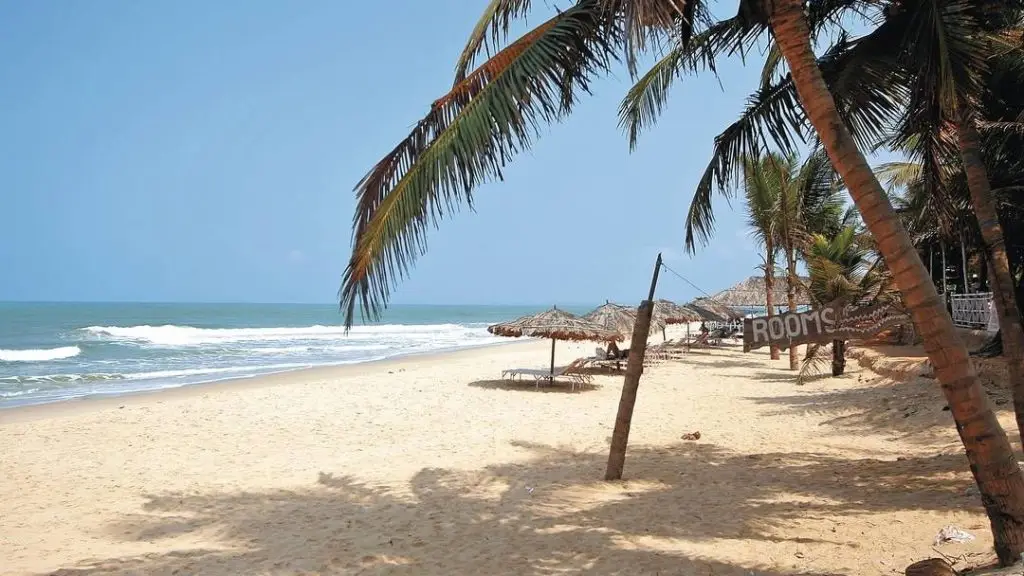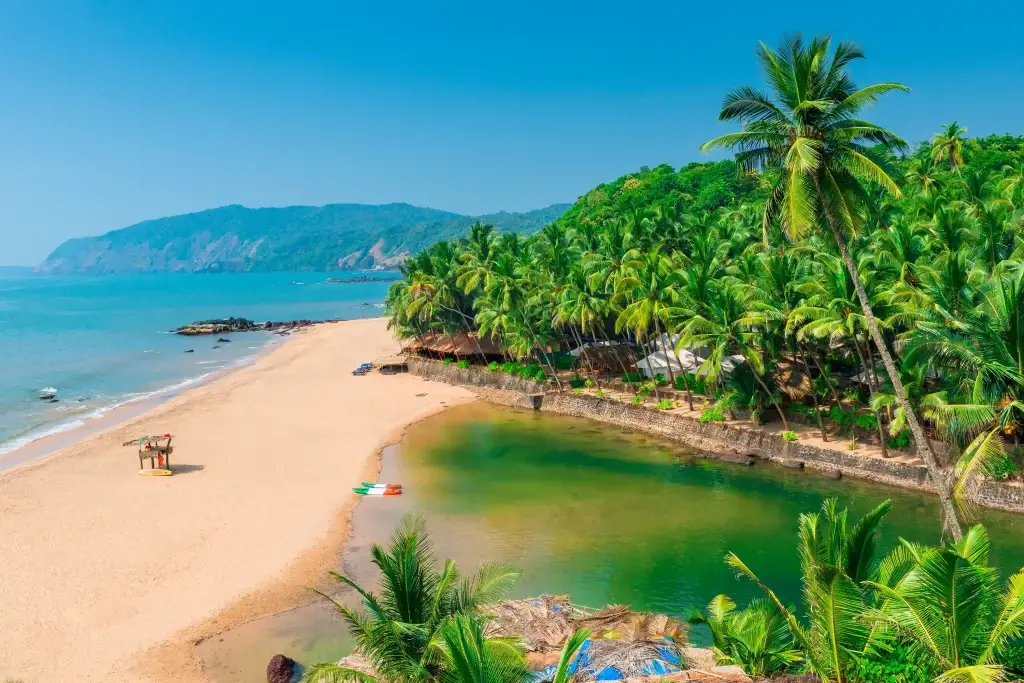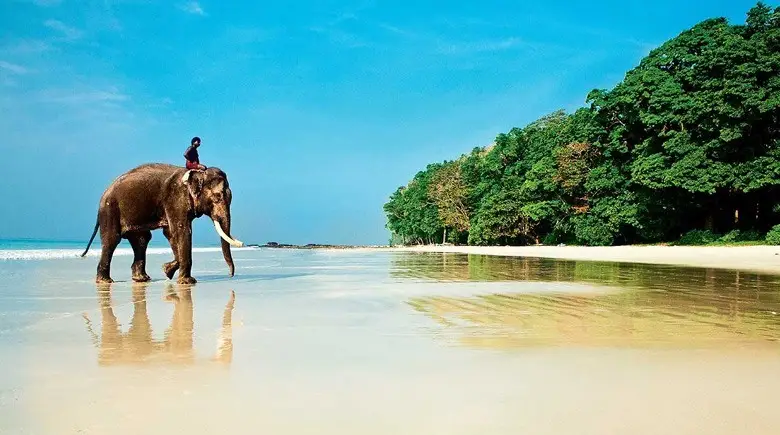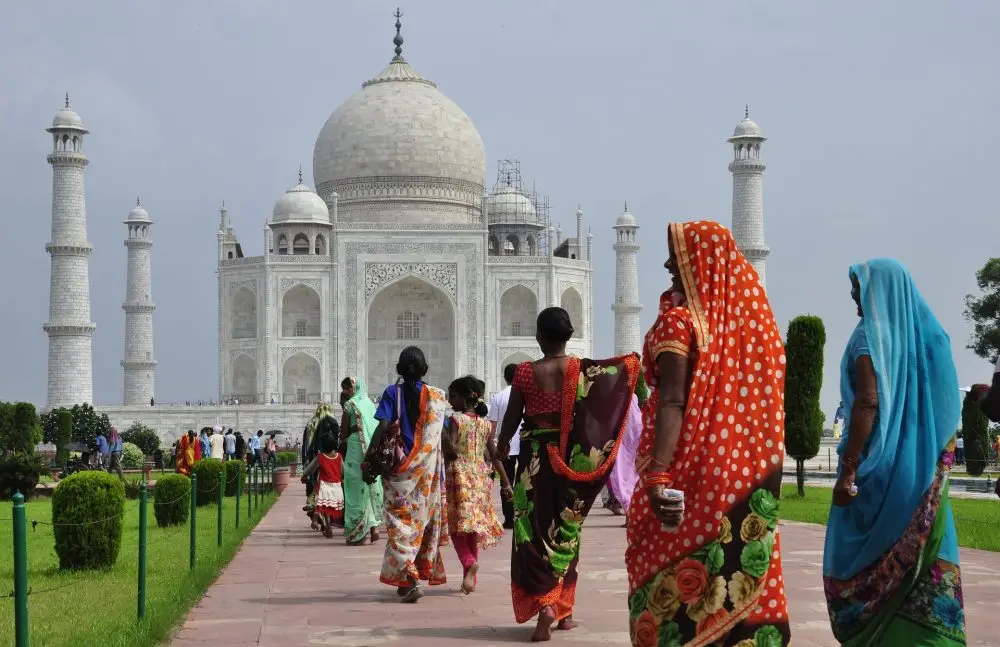Travelling to the district reveals to tourists a completely different face of India – tranquil, peaceful and immersed in nature. It hides pristine beaches, ancient temples, ayurvedic centres and protected corners where time seems to slow down. Holidays in South Goa are the choice of those who are looking for something interesting and unusual to see.
Atmosphere of south: differences from north Goa
The southern neighbourhood is strikingly different from the opposite resorts. While North Goa attracts young people, clubs and night parties, the south creates an atmosphere of silence and privacy. The scenery here alternates gently: snow-white beaches turn into coconut groves, and picturesque villages are hidden among rice fields. In the evening, a warm breeze brings the scents of spices and the sea, and the streets fall asleep by 10pm.
When deciding what to see, it is South Goa that travellers recommend to connoisseurs of nature, solitude and unhurried rhythm of life. There are no crowds of tourists, traders and noisy parties. But the best ayurvedic clinics, boutique hotels and sea cuisine restaurants with sunset views are open.
Beaches of South Goa: What to see along the coastline
 The beaches here create a unique atmosphere where nature retains its pristine beauty and the infrastructure remains unobtrusive. The coastline stretches for dozens of kilometres along the Arabian Sea, forming a chain of locations for recreation for all tastes. Soft white sand, crystal clear water, coconut groves along the coastline – a paradise corner. Each beach has its own character: some create conditions for complete privacy, while others offer relaxation with elements of comfort and activity. The first thing to see in South Goa is the coastlines.
The beaches here create a unique atmosphere where nature retains its pristine beauty and the infrastructure remains unobtrusive. The coastline stretches for dozens of kilometres along the Arabian Sea, forming a chain of locations for recreation for all tastes. Soft white sand, crystal clear water, coconut groves along the coastline – a paradise corner. Each beach has its own character: some create conditions for complete privacy, while others offer relaxation with elements of comfort and activity. The first thing to see in South Goa is the coastlines.
Palolem: the beauty of nature and an atmosphere of freedom
The beach gathers those looking for the perfect balance between scenic nature and comfort. The coastline delineates a crescent-shaped bay, protected by cliffs at the edges. The sea is calm and warm, ideal for swimming. Palolem offers a host of activities: boat trips at dawn to the dolphin pods, open-air yoga classes, cinema sessions on the beach in the evening hours. Cafes along the beach offer romantic candlelit dinners, fresh seafood, and tropical cocktails. It’s easy to find cheap bungalows right on the sand, authentic guesthouses or boutique hotels. Palolem is appreciated for its friendly atmosphere and variety of options, from quiet sunsets to light parties with live music.
Agonda: seclusion and starry nights
Agonda is considered the most secluded beach in south Goa. There are no loud parties, night markets or tourist hustle and bustle here. A ban on music after 9pm guards the silence and an atmosphere of complete tranquillity. Travellers choose Agonda for rejuvenation, meditation, yoga classes and long walks along the surf line. Cosy wooden bungalows overlooking the ocean hide in the shade of palm trees. The café serves freshly caught prawn, crab and fish dishes based on traditional recipes. In the evening, the shores are illuminated by candlelit lanterns, creating a magical scene. The starry sky and the sound of the surf become the best music to relax and reboot.
Benaulim and Colva: balancing infrastructure and nature
The beaches of Benaulim and Colva offer the perfect balance between infrastructure and natural beauty. What is definitely worth seeing in South Goa: These places are perfect for those who value convenience but don’t want to lose the relaxed resort vibe. Along the coastline there are small cafes, shops, bike and scooter hire. It’s easy to find accommodation of varying levels, from inexpensive rooms in family-run hotels to fashionable villas.
Colva is known for its livelier atmosphere, where locals and tourists alike spend their evenings in restaurants and beach parties. Benaulim, on the other hand, offers a laid-back holiday with water sports from kayaking to windsurfing.
What to see in South Goa off the tourist trails: excursions
South Goa’s excursion programme is rich and varied. Here you can not only sunbathe and swim, but also discover amazing natural and cultural monuments.

Dudhsagar Falls: a natural wonder
Dudhsagar Falls, meaning ‘Sea of Milk’, is widely regarded as the jewel of South Goa. The water flows down from a height of about 310 metres, forming cascades that sparkle in the sun. A trip to the waterfall turns into a separate adventure: jeeps take tourists through the dense jungle, where monkeys, exotic birds and rare plants can be found. Bathing in natural pools at the foot of the waterfall is organised on site.
Temples of South Goa: ancient relics
South Goa is rich in spiritual monuments: the Shantadurga Temple, dedicated to the goddess of peace and harmony, and the Mangeshi Temple, a symbol of the Hindu tradition of the region, are among the most important ones to see. The architecture of the temples combines Portuguese and Indian motifs: white-washed facades, carved columns and painted domes. At the entrance, guests are asked to remove their shoes and observe silence as a sign of respect. A visit to the temples of South Goa offers an opportunity to understand the philosophy of local life, where religion is intertwined with everyday life and culture.
Secret beaches: real hidden corners
For lovers of unspoilt nature, South Goa has surprises in store. Betalbatim, Galjibaga, Cabo de Rama – beaches where the feeling of a wild coast still remains:
- Betalbatim is famous for its quiet sunsets as the sun dips below the horizon, colouring the sea in golden hues.
- Galjibaga is known as a nesting ground for sea turtles: during the season, you can see the babies heading for the ocean.
- Cabo de Rama completes the picture with a cliff-top fortress and views that take your breath away.
A trip to these beaches requires self-organisation or scooter hire, but the experience justifies any effort.
How to organise a holiday: tips for tourists
Organising a trip requires some preparatory steps to fully enjoy your time.
Tips for an efficient holiday:
-
Transfer. It is better to pre-book an airport transfer, especially for late arrivals, to avoid searching for a taxi at night.
-
Hotels. It is worth choosing hotels closer to the beach, as walking distance greatly enhances the quality of your holiday.
-
Excursions. It is advisable to book excursions in advance through trusted agencies or local guides with good reviews.

-
Ayurveda. It is worth visiting one of the certified clinics offering wellness and relaxation programmes.
-
Scooter hire. For travelling between beaches, renting a scooter is cheaper than a taxi and offers complete freedom of route.
So what are the things worth seeing in South Goa?
 The region offers a rare combination of nature, culture and cosiness. Here, holidays are a true reboot, where every day is filled with new colours, from pink sunsets over the ocean to lush green hills. Beaches offer a sense of freedom, excursions offer new discoveries, and the atmosphere offers harmony and peace. A trip to South Goa turns an ordinary holiday into a deeply personal adventure.
The region offers a rare combination of nature, culture and cosiness. Here, holidays are a true reboot, where every day is filled with new colours, from pink sunsets over the ocean to lush green hills. Beaches offer a sense of freedom, excursions offer new discoveries, and the atmosphere offers harmony and peace. A trip to South Goa turns an ordinary holiday into a deeply personal adventure.
 en
en  ar
ar  de
de  es
es  fr
fr  nl
nl  hi
hi  it
it  pt
pt  el
el 



